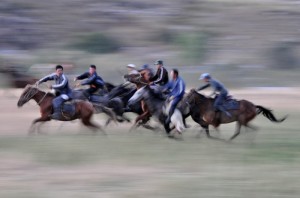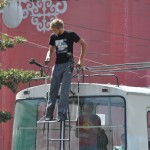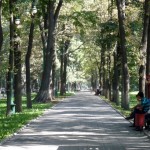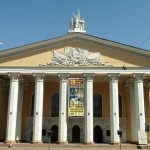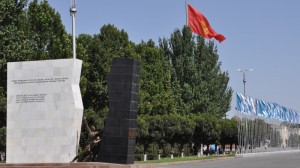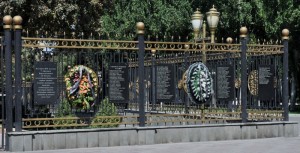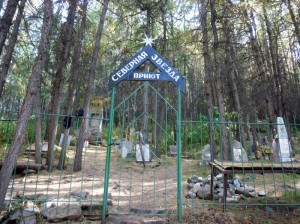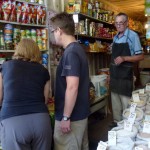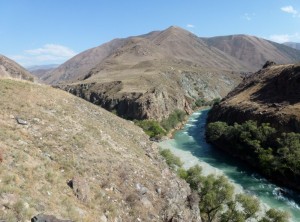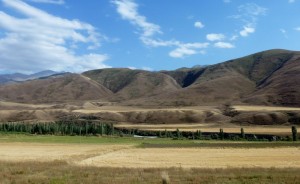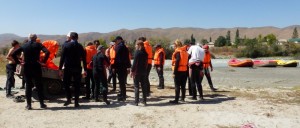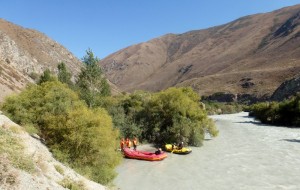30-day Bishkek – Ashgabat overland: Day 1 – 5
My 30-day overland journey from Bishkek, Kyrgyzstan to Ashgabat, Turkmenistan started when I met up with my group on August 26. The first 12 days were spent leisurely in exploring the northern and eastern part of Kyrgyzstan. I had a lovely time in the Chong Kemin Valley, Karakol, Jeti-Oghuz Valley and Lake Song Kul.
Day 1 (August 26, Sunday): Bishkek
I was glad to leave the South Guesthouse to join my group at the Asia Mountain Hotel which is comfortable and cozy with a beautiful garden and a swimming pool.
I was greeted warmly by leader of the group, Alexander (Al) and James (his deputy). Al who has been in the job for three years just turned 30 the day before. He and James gave the new comers (8 in total) who joined at Bishkek at 10am a warm welcome.
The Beijing – Istanbul journey started in Beijing on July 15. For the 15-day Bishkek, Kyrgyzstan – Tashkent, Uzbekistan leg from August 26 to September 10, there were 18 participants including seven Australians (Angie and Duncan, Cheryl and Norm, Gabbi, Helen and Mark), five Brits (Darren and Rosa, Dawn, John and Kristy), two New Zealanders (Alex and Rebecca), a Dane (Finn), a Dutch (Katrien), a Spaniard (Hortensia) and me. We had an interesting mix with seven males and 11 females. Half of the group aged over 56. Hortensia, the eldest at 73, is jolly and most energetic while Gabbi, the youngest at 22 is sweet and lovely.
Things were in full swing after lunch. Billy, our young 22-year old local guide, took us on a walking tour. Bishkek is a nice sleepy, leafy and green capital in Central Asia with a population of about 1 million. It has a provincial feel and has few tall buildings.
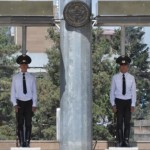 |
We went to the Ala-Too Square, the President’s office (which was the Parliament till 2011); the National History Museum, the Friendship Memorial and the White House (where the Parliament sits now). I had been to all these places on my own but it was still fun to walk with and get to know the group.
It was however interesting to have Billy explaining the significance of the memorial which commemorates the overthrowing of the regime in 2005 (the Tulip Revolution) next to the White House and the stone plaques with names of those who died during the 2010 revolution.
Our next stop was the Osh Bazaar, the largest market in Bishkek. We were given half an hour to wander on our own. When we met again, John told us that he had been taken to a police unit at the market where he had a body search. He was forced to empty his wallet on the table in the presence of six policemen. He later counted his notes and found a US$50 note missing. Billy and John went back to raise the matter with them. Finally, the chief of the unit handed John back US$50. This came as a shock: we know Kyrgyzstan is corrupt but have not imagined the policemen would be so blatant in snatching money from tourists!
It was 5pm before we returned to the hotel to have a swim. In the evening, we went to the popular Steinbrau pub close to the hotel for dinner. The German beer is fresh and good. But it took almost two hours before our food arrived. It was hopelessly slow!
Day 2 (August 27, Monday): Bishkek – Ala-Archa National Park (40km)
As 11 participants had to apply for a visa for Uzbekistan and the embassy was closed on Monday, Al changed the itinerary for Day 2. Instead of leaving for the Chong Kemin Valley, we went to the Ala-Archa National Park to spend a night.
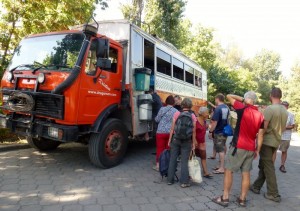 |
I therefore returned to the Park unexpectedly. After lunch, I joined Rebecca, Kristy, Katrina, Finn and Mark on a walk to the alpinist cemetery. The slope is fairly steep and slippery and we took about 45 minutes to get to the cemetery. Rebecca, Kristy and I walked on for another hour while the other three returned to the campsite to prepare dinner. I picked up a walking pole which was a great help. We arrived at the campsite after 6:30pm and I met the manager in charge of the hotel and hostel. She recognized me and even gave me the key to the cabin I stayed before. It was like coming home and I had a hot shower. I appreciated her kind thoughts.Katrien, a pleasant and young Dutch girl is my tent-mate. I did not sleep well as I had to get up early to prepare breakfast.
Day 3 (August 28, Tuesday): Ala-Archa National Park – Bishkek – Chong Kemin Valley (220km)
I was assigned to cook group 2 with Duncan, Angie and Helen. We planned to serve French toast but the gas stove did not function properly. We were late in serving our first breakfast.We departed for Bishkek around 8:30am and arrived at the Uzbekistan Embassy at 9:30am (the fourth time I was at the Embassy).Apparently Novimad called the Embassy on Friday to make appointments for the group on Tuesday. As a result my friends had their visa issued without trouble before 11:30am. I could not understand why Dragoman had told me to apply for the visa on my own knowing that the majority of the members had to obtain their visa on August 28!
Al then took us to the Alamyedin Bazaar to buy food for the next two days. My cook group had to shop for both lunch and dinner. We served a light lunch with sausages, cheese, tomatoes, cucumbers, apricots and grapes en route to the Chong Kemin Valley in a nice spot under poplar trees.
The 80-km long Chong Kemin Valley lies about 140km from Bishkek, along the Kazakh border. We arrived at our campsite by the Chong Kemin River around 5 pm. There is not much flat land but we managed to cram in 11 tents. Duncan and Angie are great cooks and have high standards. They spent hours in preparing a fantastic sauce for the spaghetti. My only contribution was to chop the vegetables! I wish I could have done more to help. I was too tired and it was a warm evening. I slept like a baby for the first time on this trip.
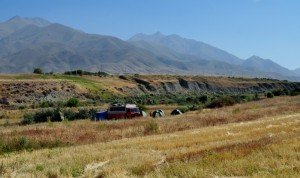 |
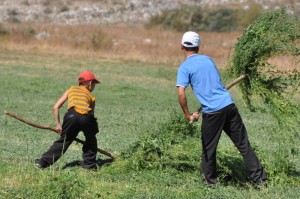 |
Day 4 (August 29, Wednesday): Chong Kemin Valley
It was one of the most enjoyable days of the trip. I got up leisurely warmed up by the morning sun. Billy went to a nearby farm and fetched us a bucket of hot milk fresh from the cows! The milk is so tasty and I had two glasses.
After breakfast, Billy took us to see the Kayindi Village (which has less than 1,000 inhabitants). Most houses seem roomy and have satellite TV. We first visited a local family which has some 50 sheep (USS$150 each) and a few cows and horses (US$1500 each). The extended family (grandparents, parents and four kids) live in two houses with many apple trees in the garden. They grow potatoes in another plot next door. I was delighted to see the kids picking and eating apples from the tree and they look all happy, healthy and energetic. I had great fun watching a man making bricks with grass and mud. The bricks are left to dry in the sun.
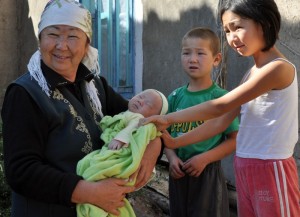 |
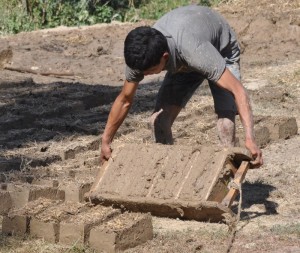 |
|
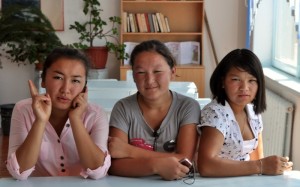 |
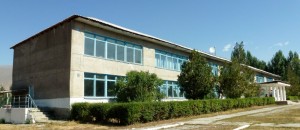 |
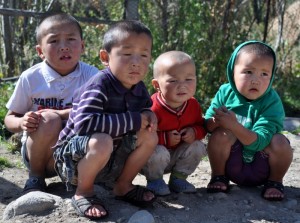 |
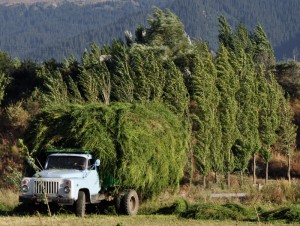 |
We visited a local school which is new and impressive. It has about 250 students in 11 classes. Though the school was still on holiday, we met one of the English teachers. I am impressed by the facilities in the school. In the afternoon, 12 of us joined a 25-km rafting trip. The river is shallow, narrow (about 4-6 metres most of the way) and fast – flowing. Though the rapids might be graded level 2 in terms of difficulties, it was exciting as the raft moved along so quickly and there are numerous twists and turns which we had to paddle fast and hard.
We got back to the campsite around 4:30pm. I had a wonderful bath in the river. The water is refreshing and not cold! Then Billy asked the villagers to play a game of “ulak-Tartys” (goat polo) where two teams of riders are chasing a headless goat and whichever team puts the goat in the goal wins. The game was supposed to start at 6pm. But by the time the teams were ready, the sun was already half set. Then they argued for another 20 minutes to decide which team would take the goat and the 1000som game money. It was getting so dark that I could hardly see except a cluster of horses and the sand dust. The team from the Kayindi Village sadly lost.
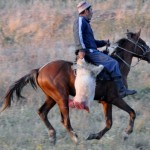 |
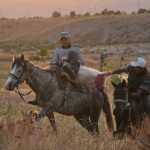 |
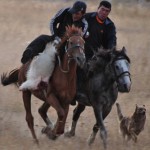 |
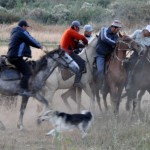 |
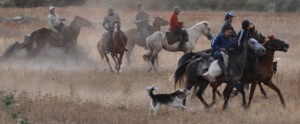 |
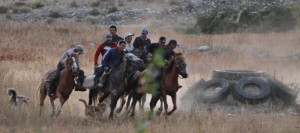 |
The night was freezing and I could hardly sleep.
Day 5 (August 30, Thursday): Chong Kemin Valley – Cholpon Ata – Karakol (320km)
We set off early at 8am and made a stop at Cholpon Ata by the Issy-Kul Lake to visit the open air petroglyphs museum in a huge field of glacier boulders. Some of the these petroglyphs date from the later Bronze Age (about 1500BC) but most are from 8th century BC to 1 AD. Most of the engravings we have seen are animals including long-horned ibex and deer.
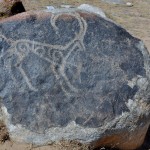 |
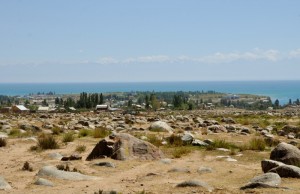 |
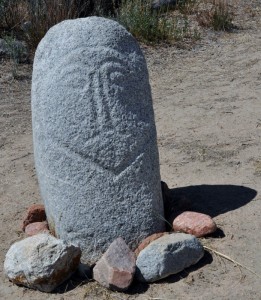 |
The Issyk-Kul Lake is one of the biggest natural water reservoirs in the world measuring 170km long and 70km wide. We had a nice swim at a beach for an hour and a half. The water is clear and refreshing. But it was hazy and we did not see the post-card view of the lake surrounded by rugged snow-capped mountains.
After another three hours’ drive, we arrived at Hotel Amir in Karakol around 7pm. The hotel is small but cozy. It has free wifi! I spent the whole evening skyping and uploading my Atlai Mountains photos to my website.I also had an excellent sleep in a firm bed and in peace!
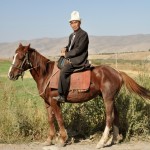 |
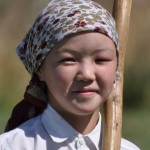 |
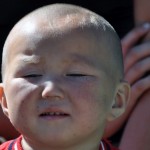 |
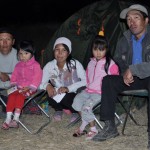 |


